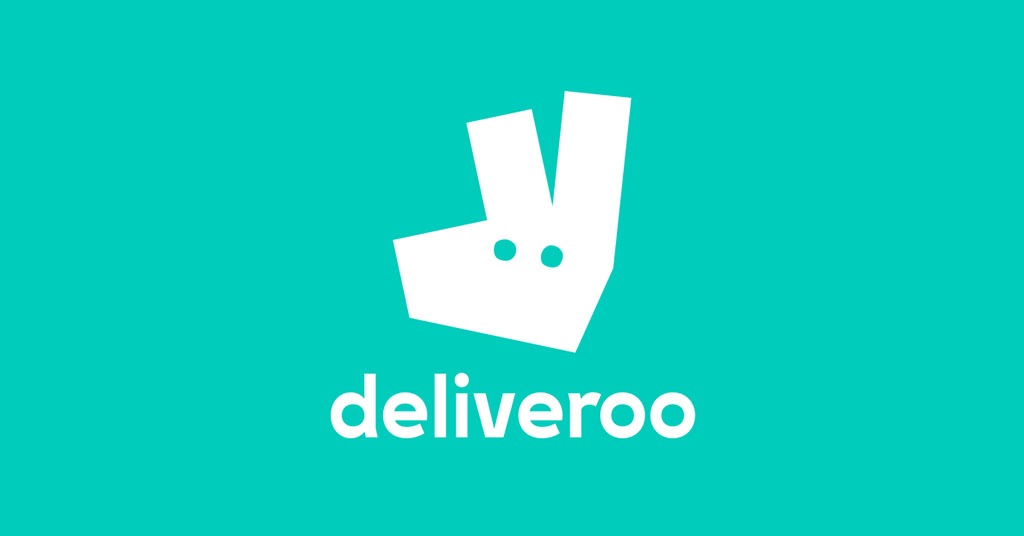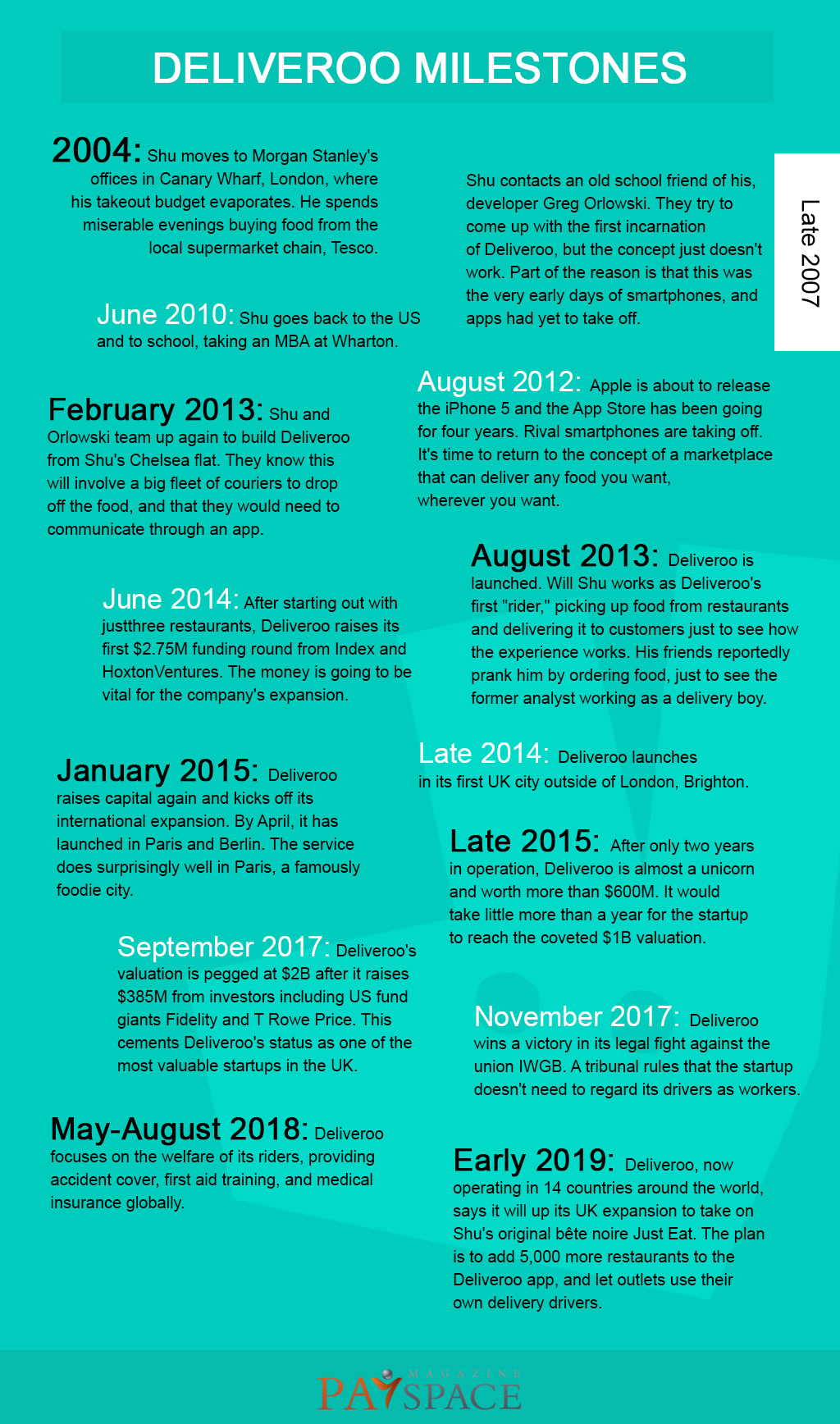Find out about the history, features, pros & cons of Deliveroo

Throwback Thursday: Deliveroo’s way from a dream to $2B. Source: deliveroo.co.uk
At first glance, anybody could come up with this idea. Deliveroo is an application that delivers its customers’ food anytime and anyplace. It sounds like something not very complicated, but still bright. It seems more like a dream of a hard-working employee who often burns midnight oil.
Thus, Will Shu and Greg Orlowski founded such a kind of food delivery service in 2013, with only one aim: making the delivery process as seamless as possible.
This application offers takeaway food from multiple restaurants. For the most part, these diners have never had a delivery service before, and it was something really new.
The startup has come a long, yet not easy, way. Now it is a company that has revolutionized the food delivery concept with a valuation of around $2B.
History
William Shu was born in the USA to a Taiwanese family. He graduated from Northwestern University and received a bachelor’s degree in 2001. Then he lived in New York and worked as an Associate Analyst at Morgan Stanley.
Посмотреть эту публикацию в Instagram
However, Shu planned to leave the States and move to London, which he implemented quite successfully. Nevertheless, he had to moonlight in restaurants and bars in the Canary Wharf commercial district, since he was in dire straits.
Having hospitality industry experience, he came up with the idea of food delivery from restaurants that didn’t have such an option.
There are a lot of restaurants, which are in high demand, but they are limited by the number of seats. Some people can’t find an available seat since the restaurant is busy, while others want to taste the food from the same restaurant, but can’t just leave their workplaces, homes, etc. At this point, Will Shu calculated how much extra revenue restaurateurs could earn.
That is how Deliveroo was created.
Посмотреть эту публикацию в Instagram
Deliveroo was officially launched in London in August 2013. Initially, the startup had only two restaurant delivery options, since it was extremely hard to convince diners to participate in this kind of experiment. Deliveroo’s CEO enlisted the support of his old friend Greg Orlowski, and the latter became a co-founder.
It took a year to realize that the startup could work out when a couple of Chelsea-based restaurants joined Deliveroo and it appeared to be quite a successful move. Both of the founders had a gut feeling, which told them it would be a great deal. Nonetheless, they still needed to attract capital as soon as possible.
They received $4.5M in Series A Funding. It helped them to launch the service in Brighton, which was the first city outside of London, where the Deliveroo app was available.
In early 2015, the startup raised $25M during the Series B funding round, and six months later, they attracted $70M more. Will Shu launched Deliveroo in more than 30 cities all over the UK and Ireland.
Deliveroo has agreements with over 12,000 restaurants across 200 cities in 14 countries, employs over 14,000 full-time staff, and has no less than 21,000 delivery riders on a “self-employed” basis.

Pros & cons
Pros
- Search suggestions. This Deliveroo feature is really very handy. Moreover, the app can even show the number of open restaurants for the cuisine you’ve chosen.
- Ordering food. The app has a good visual style and layout and shows users how to edit fields.
- Time of delivery. This food delivery company usually brings orders on time.
Cons
- Searching process. Whenever you scroll back up, there is a pop-up to ‘Deliver to my current location’, which is quite irritating.
Popups. This feature sometimes is annoying, since popups validate an action that was made on the previous screen – For instance, Log Out (yes/no). - Keeping track of delivery. The app really fails, when it comes to showing the customer all the delivery steps on the same screen. Thus, sometimes clients don’t really know which step their food is at.
SEE ALSO:









